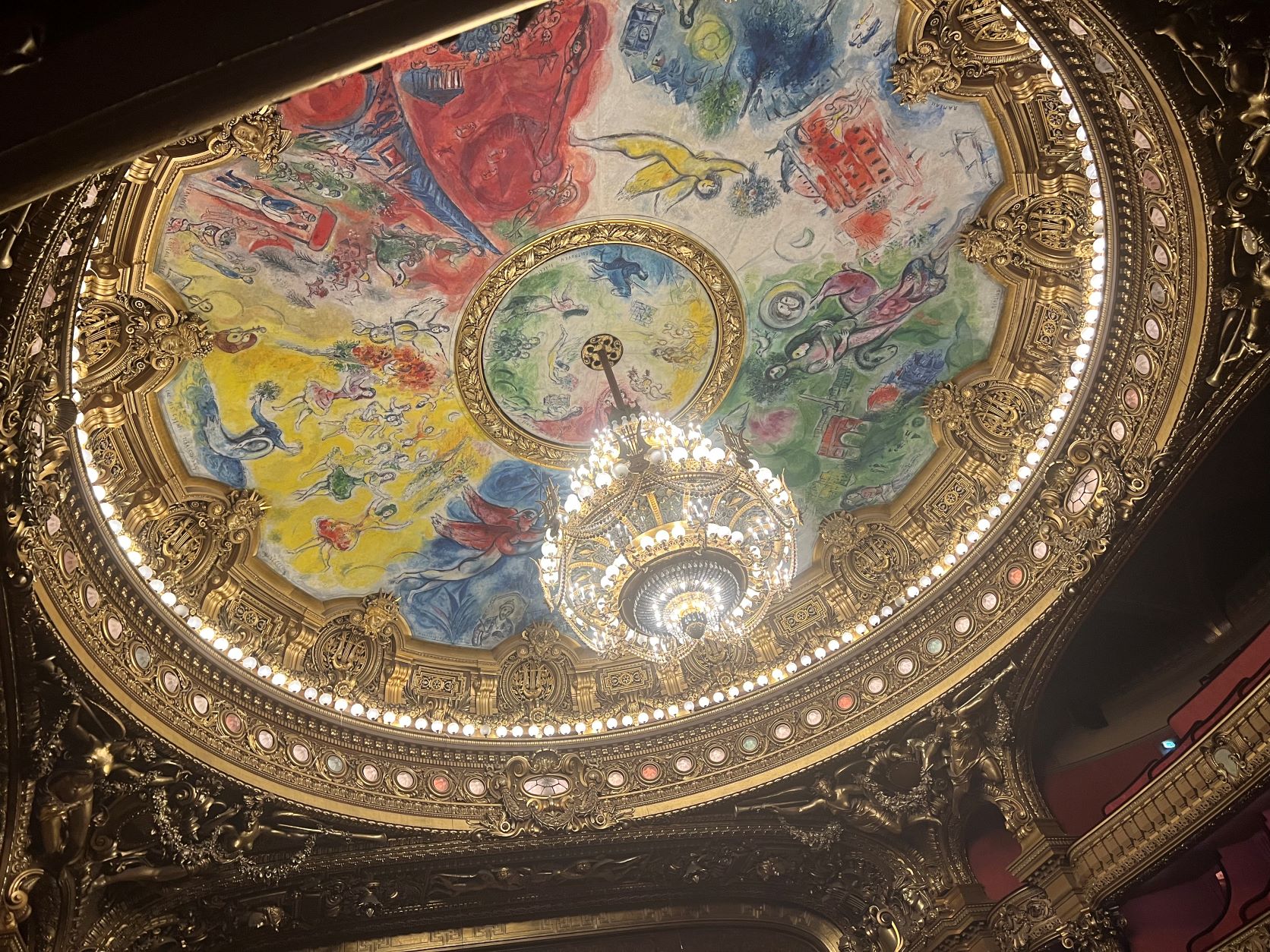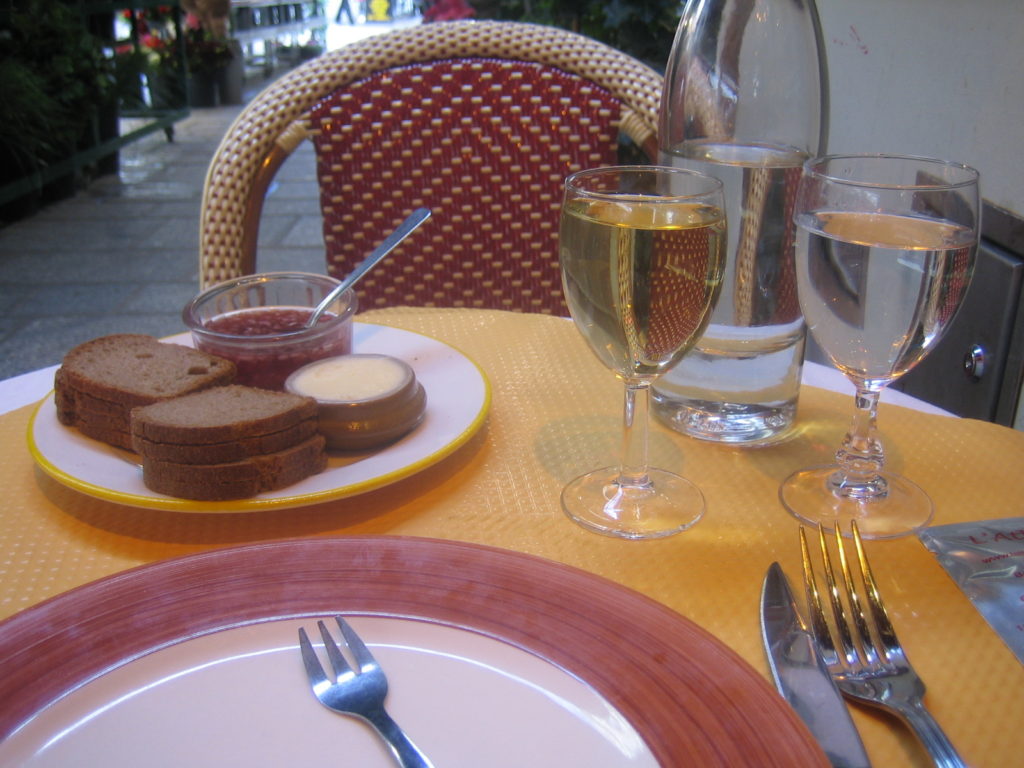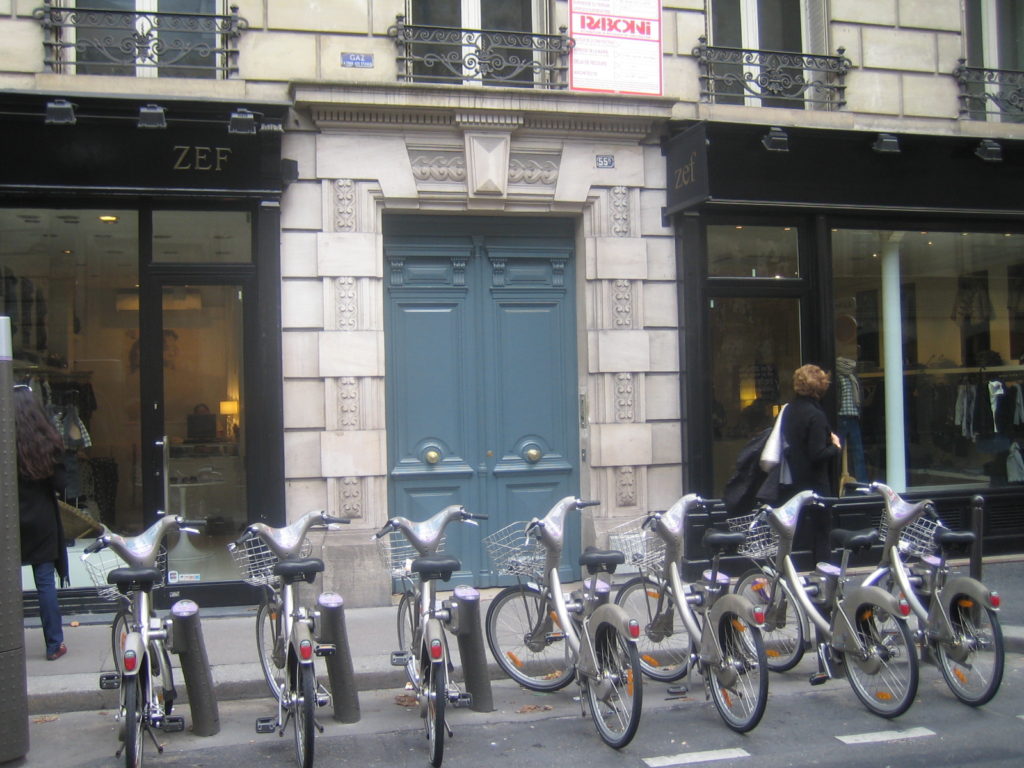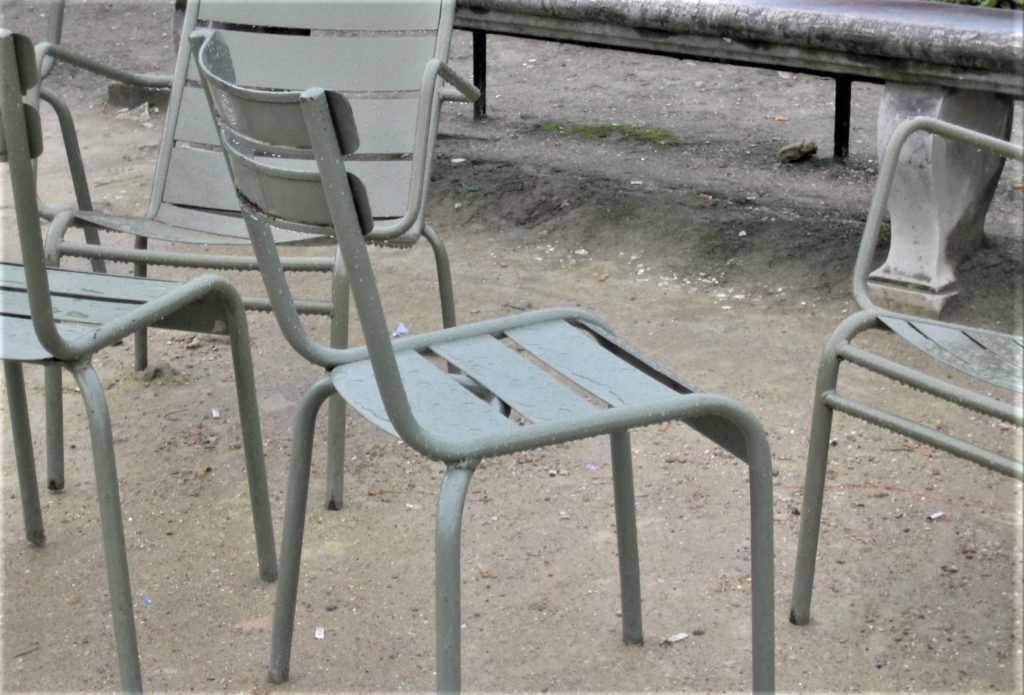I had ballet and opera on my mind as I strolled on my first full day in Paris past the Place de la Concorde with its “luxe” shops and The Ritz Paris Hotel north to the Palais Garner, the magnificent example of 19th century theater architecture where the the Opéra National de Paris and the Paris Opéra Ballet perform. The route passed darling shops selling ballet shoes and showcasing children’s tutus, not surprising since the ballet school is also part of the organization.
Entering the cavernous building, I could imagine the fashionable Paris elite parading up and down the Grand Escalier (staircase) with its vaulted 30-meter-high ceiling. In the U-shaped theater itself, designed in the Italian theater tradition, I heard a tour guide describe how seating was arranged according to “standing” so that members of the audience could “see and be seen” in the marble, stucco, velvet and gilding decor. An 8-ton bronze and crystal chandelier, with its 340 lights, hangs from the ceiling painted by artist Marc Chagall and the feature I really wanted to see. Unfortunately we couldn’t go into the theater itself, and the bird’s eye view also required kind but determined jostling in and out of the tiny balcony overlook. Chagall’s 2,600-square-foot canvas, completed in the course of eight months, commemorates composers, actors and dancers, in the rich color and detailed composition central to his style.
Virtually every inch of the interior, including the massive 154-meter-long Grand Gallery, a place for high society to mingle and the marble mosaic floors, is elaborately decorated. The library-museum runs the entire length of the theater and contains the Opéra permanent collections throughout its history. On the way down through the outer halls, I passed by a few cases of costumes evoking the ornamentation expected in such a dramatic setting, including the ballerina tutu for the Soir de Fête in 1925, in white tulle, organza and satin embroidered with pearls and gold filaments, characteristic of the style during the Art Deco period of the 1920s.




